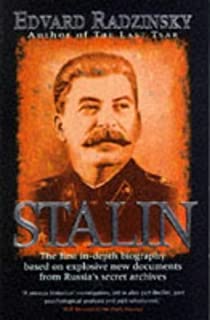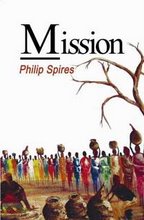Suite Havana is a newly
inaugurated exhibition of paintings by Anthony Miró, hung in Palau Altea on Spain’s Costa Blanca. It complements and
amplifies an existing show of the artist’s sculpture, an exhibition entitled de
mar a mar, throughout the town. Altea is a long-established artists’ town, a
white town whose appearance might suggest its location on a map might have
slipped north from Andalusia by a couple of hundred kilometres. But this is
Valencia and Altea is a Valencian town hosting Anthony Miró, very much a Valencian artist.
But despite its
homegrown nature, the exhibition Suite Havana, like the sculptures of de mar a
mar have done for several months, will provoke controversy and calls for its
removal amongst that segment of the town’s population for whom sexual taboos
retain their significance. For, like his sculptures, the subject matter of the
paintings in Suite Havana is sensuality, sexuality and sex, three different
facets of the same taboo. But whereas the three-dimensional bronzes portray
both positive and negative images of various sexual acts, the paintings in Suite
Havana portray only naked or near-naked Cuban women. And they are all beautiful
women, all desirable, all at first sight arguably ideals of their type. This,
in itself, does not separate them from the Greek pottery or poetry-inspired
images of the sculpture, since ancient Greece was not noted for the realism of
its own depiction of the human form. But the gender specificity does.
Whether Western art of
the Christian era portrayed sensuality as it’s prime message before Titian‘s Venus of Urbino is a matter for the art
historian, which I am not. But for me that particular painting is
representative of a turning point in the history of art. Titian‘s Venus is naked. Her left hand cups her
pubic area, conveniently hiding its detail. There is nothing new either in art
or life. But what is immediately different about the Venus of Urbino is that
she engages the viewer. And she smiles. There is an engagement in her
expression, almost a recognition, indeed a recognition that may even be
personal, but equally it could be contractual. We could be her friend or her
lover, but we could equally be her customer, with a hand to reveal its detail
only after a contracted payment is made. The taboo here may go well beyond mere
sex and sexuality. It may indeed extend as far as prostitution, deception and
even might reach as far as a notion of pleasure, even worse, pleasure for its own
sake. It’s an image
whose public display would be controversial today, let alone in mid-sixteenth
century Venice.
A century or so later,
Rembrandt was painting his canvases that glowed with the human reality. He
produced images of ordinary people powerful enough to provoke even today’s observer with feelings of recognition,
sensations of association, and the desire to greet by name, a need almost to
renew an acquaintance. As observers, we cannot fail to feel the humanity, the
proximity to our own experience, an empathy with what we assume are the
subject’s concerns. But is this quality diminished, enhanced or unchanged by
our knowledge that, largely still hidden from public view, there are hundreds
of drawings and sketches by Rembrandt the depict the erotic, the sex act, the
aroused genitalia and expressions of sexual ecstasy? Do we find humanity to an
equal degree in such images? Does our knowledge of this side of Rembrandt´s
interests change the way we view his ability to penetrate the human psyche?
And, as a third
observation on the theme that is in danger of overstatement, how do we
personally react to Courbet’s Origin of the World? Courbet
- we now assume – was of the realist school, the group that grew out of the Brabizon
painters of the early 19th century, where the everyday was both subject and
object of interest. For those who do not know this particular work, it’s in the Musée d’Orsay and depicts, no more and no less than, a
close-up of the hirsute genitalia of an unnamed, unknown and an identifiable
woman, a viewpoint of a torso that might be achieved just before oral sex.
After many years of not seeing light of day, the work is now in the gallery for
all to see. It stays the right side of voyeurism, opinion has it, but why, how
or in whose opinion is rarely possible to define.
There exist other
examples, of course. Velasquez’s Venus was painted some years after that of
Rubens. In both paintings a voluptuous back view is presented and in both the
viewer is engaged via a mirror held by Cupid. Goya’s unclothed Maya stares at
her viewer and she incurred the wrath of the Inquisition. Manet’s Olympia
caused a scandal as late as the mid-nineteenth century in Paris, of all places,
where brothels were an accepted part of commercial life, where there were at
least 150,000 registered prostitutes and where the state took fifty per cent of
the transactions in taxes. And it was a woman, Mary Richardson, who attacked
the Velasquez in London in 1914. She later said she did not like the way men
gaped at the picture, though the initial motive was to protest against the
arrest of a suffragette leader.
It has often been said
that female nudes in painting exist for the eyes of men. The women depicted,
the nostrum has it, are always ideal types, worthy of voyeuristic scrutiny, of
elevation to the status of the pornographic. The twentieth century did
challenge that notion, especially via the work of artists such as Lucian Freud
or Tracy Emin, both of whom have their own complex relationships with
sexuality. Indeed, at the opening of Suite Havana in Palau Altea, a companion
of mine stated that in her opinion these seemed to be works painted for men.
It is time to describe
the work themselves, lest the critique take centre-stage over the content. Suite
Havana is a collection of 50 or so naked or near-naked Cuban women. Each
painting features one or sometimes two models. Most paintings feature a named
individual and she is often returning the gaze of the viewer, just as Titian‘s Venus does. Facial expressions vary from
neutral to inviting, from distance to ecstasy. Some works concentrate on
particular parts of the body and some subjects are wearing pants or a bikini.
All the women are beautiful.
The paintings are
mainly acrylic on canvas. There are a few abstract prints, but the style is
predominantly what might be called photorealism. These are named, identifiable
women, posing naked for us to look at. And, because of the realism of the
style, the viewer must get very close to these images to appreciate how they
differ from photographs. There are outlines here and there, sometimes in black
or blue or white. There are added lines that accentuates something extended
from the image itself, for example a lengthened lock of hair, a circle
accentuating the buttocks. And most of the women are lying on beds. Just like
the one-dimensional imagery of Courbet’s Origin of the World, these subjects
are in your face. And clearly intentionally so.
But let’s suppose they were all wearing enough
scanty clothing to be socially decent, to break no taboos, and let’s introduce
a product of consumer capitalism into the fray. The smiling woman then becomes
an enticement to buy, to consume, to associate the perhaps subliminal pleasure
the image creates with the featured product, without ever wanting explicitly to
suggest that the woman is part of the product being sold. Suppose we remove the
woman’s name from
each title and replace it with that of the product. I use only generics as
examples: toothpaste, 4 x 4 gas guzzler, washing powder, fast food outlet,
dishwasher. We all know this is a woman. We all know that women have breasts
and genitalia. We all know that these are being offered alongside the
commercial product. Why is it seen as taboo if these qualities, these
realities, which we all know exist, are revealed? Does our collective problem
lie in the suggestion that these women might just be selling themselves? I wish
I could answer the question, but asking it is the important act.
I now read that the
artist’s Instagram account has been threatened with closure because he has
promoted his exhibition with some of its publicly displayed images. Suite Havana
and work like it always asks the same question. The medieval European mind was
clear at least institutionally that nakedness was a matter of shame. The Renaissance
forced a reassessment of this attitude, and it is a reassessment that is still
underway, despite Titian‘s,
Rembrandt’s, Courbet‘s
and other artists’ contributions.
The images themselves
are pleasing, in their provocative, arousing and challenging way. They might
promise ecstasy, but sometimes the detail differs, such as in the canvas where
across the woman’s
lower abdomen there is a scar of a Caesarian or a hysterectomy, with a strange,
almost umbilical cord of thread trailing towards it from the navel. My friend
pointed at the woman’s
labia and declared she thought it looked like a wound. I was reminded of
Margaret Atwood’s
feminist work, The Gash.
Suite Havana is a
collection that would cause some people offense. My advice to such people is, “Don’t go there”. But, as ever in art, the
questions are always more interesting than the answers. The beauty of these
images and their capacity to move anyone who does seek the experience is indisputable.

















